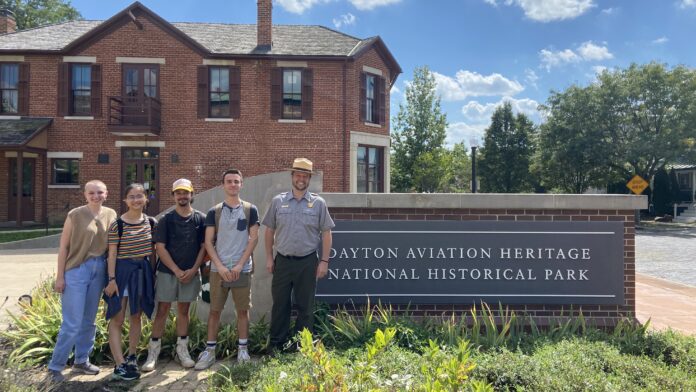“Hold your breath for 18 seconds. Ready? Go! Did you do it? You’ve now held your breath for as long as the first airplane flew. Not very long, right?” This is how my tour guide told me about the first flight on my second visit to Dayton Aviation Heritage National Historic Park. On my guided visit at Huffman Flying Field, the honey locust tree in the distance became a marker of innovation. “That tree is the edge of the first ever full turn in flight, it’s a descendant of the actual tree the Wright Brothers used to fly around!” This is all in stark contrast to my first visit. Recalling that first experience, it’s quiet. The room is filled with shelves of information, signs to walk close and read, a timeline, names I don’t recognize. Overwhelmed with choice, I skim a few before moving forward. This visit is entirely different to that of my second, although the freedom to wander the historic building is exciting, interacting with the information on the walls is the opposite of enticing. Given that there is so much historical significance to the relics and buildings at Dayton Aviation Heritage National Historic park, how can we design opportunities for people to connect with the history while on a self guided tour?
Dayton Aviation Heritage National Historic Park is one of 57 National Historic Parks within the United States National Park Service. A National Historic Park is like a historic site, but with a more extensive area or purpose. Dayton Aviation Heritage NHP is actually made up of several different properties: The Dunbar House, Hawthorn Hill, Huffman Prairie Flying Field, Huffman Prairie Interpretive Center, Wright Dunbar Interpretive Center, and Wright Hall in Carillon Historical Park. These centers are scattered throughout the city of Dayton and also have different partner organizations. Carillon is run by a privately owned organization, Huffman Flying Field and Interpretive Center are both partially governed by Wright Patterson Air Force Base, and Hawthorn Hill is a historic site, but also a private residence. The Dunbar house actually has little to directly relate to aviation history, as it was the home of the famous poet Paul Laurence Dunbar, and while he was friends with the Wright Brothers, their stories are mostly close in location rather than causation. Additionally, the park also partially owns the Wright brothers airplane factory, which is currently an abandoned property. The park itself is a complex and many faceted experience, not just in its many locations, but also in its educational topics.
Let’s focus on the topics in one location, the Wright Dunbar Interpretive Center. According to ranger and director of operations Ryan Qualls, the Wright Dunbar Interpretive Center has a heavier focus on the Wright brothers’ early life. However, the park itself does not specify this. This park is primarily a museum type exhibit in a large room, separated by the displays into a winding path. Upon entering the building that is the park, the first room has a large Wright flier model, the front desk, and the gift shop. As you enter the museum proper, the main room is filled with shelves and signs, which, according to Ryan, are there to provide context to the invention scene in Dayton at the turn of the 20th century. As you proceed through the museum you get bits of information on Dunbar and the Wright brothers’ early lives. Then you move into an immersive historical experience of a grocery store, one that was there when the Wright brothers were alive, and is still in its original space. Then it’s onto some of how the Wright brothers worked out early aviation mechanics, their timeline in testing flight, and some of their inspirations. This leads visitors upstairs into more information about the Wright brother’s personal life, their early careers, and Paul Laurence Dunbar. These exhibits are mixed indistinctly between historical relics and displays on historic locations.

The Wright Dunbar Interpretive Center is one of the more in depth and involved experiences of all the park locations, but its density of information can be a touch overwhelming. The museum portion, despite having many original relics and rooms, is primarily filled with reading. In a survey conducted for this research, of 66 participants, 70% reported that they remember sights best from a museum visit, while only 9% reported remembering what they read. In my comparisons of what I observed in a guided tour versus an unguided tour environment, I discovered that when unguided it is difficult to decide which displays to read in the park. In a guided tour the most interesting parts of the story, or those tied to the historic experiences you can see in the park, are easily highlighted and explained in an approachable way. In an unguided tour, while there is a certain joy in exploring the historic building and winding path alone, connecting the pieces of the story of Dunbar, the Wright brothers, their early career, and their advancements in aviation science is complicated at best. Additionally, in my survey I recognized no pattern between the expressed interest in Dayton history, and aviation science and history, meaning if a visitor followed only their interests they are likely to struggle to move from one area of a museum to the next while following a coherent storyline.
In my research, I went to visit and observe other educational experiences to see how they guided visitors without a direct tour. Many used a sort of visual or environmental cue that was consistent with the primary educational goal of the experience. At the Orton Geological Museum, it has a historic communication style, but a scientific focus- it’s mostly about archeology and geology so it has a mix of history and science. The display for the museum makes this clear: sandy colors, glass displays with wood trim, it’s like it’s out of an archaeologist archive. It sets the mood for the type of information that is going to be communicated. At Franklin Park Conservatory their indoor botanical biomes take visitors around the world, each room hosting a variety of plants from a different biome around the world. These differences in environment are not only cued by signage and park literature, but also by the landscaping and art in each room. The room for the desert biome has sandy concrete flooring, faux rock structures, and sand colored mulch. The room for the rainforest biome has a wooden bridge boardwalk, a waterfall, and dark stone rock covered in climbing plants. These environments not only enhance the aesthetic experience of a visitor, but also intuitively add to their understanding of where and how these plants grow by depending on recognizable environments as soon as a visitor enters.
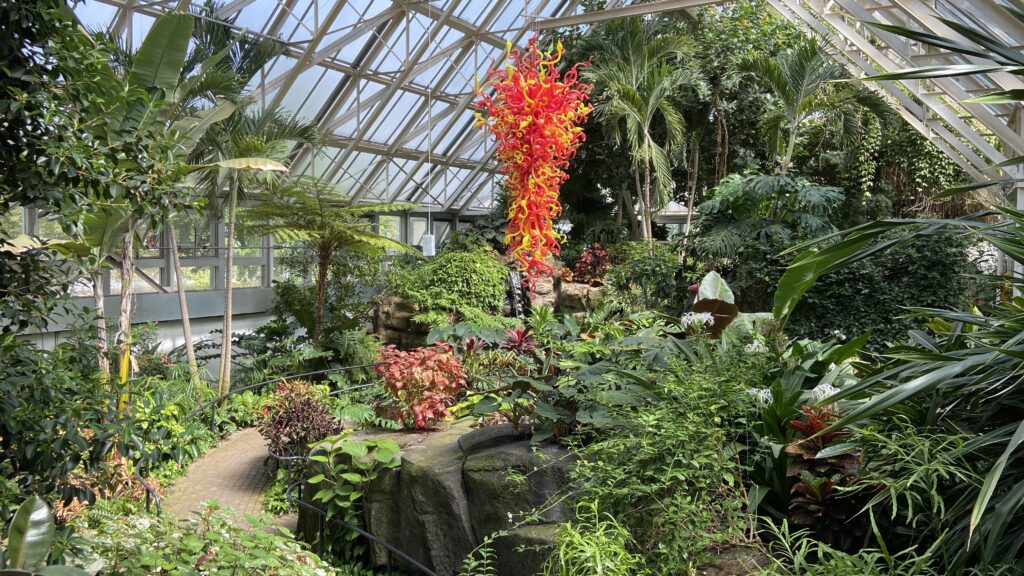
At Dayton Aviation Heritage NHP there are some touchpoints built into the experience, mostly focused on the aviation science portion. To investigate how interactive touch points work with the visitor experience, I used design conjectures around one element Dayton Aviation Heritage National Historical Park provided for us: the puddle jumper. The puddle jumper is one way that rangers connect with visitors, although it is mostly only available through guided tours and outreach programs, or if a visitor chooses to buy one from the souvenirs in the gift shop. This toy is one modeled after a toy available to the Wright brothers. It flies using a twisting propeller powered by a user’s hands. In my research around this toy, while it did connect people with the wonder of flight, its connection to the historic toy was more tenuous. “It made me feel like a kid, in a good way,” one person said while trying the toy for the first time. “It made me wonder how it works,” another person mentioned. My first conjectures focused on stretching the experience of this toy to tie it to more points of the story. It is not visually similar to its historic counterpart, so another connection could help give people a checkpoint in the museum. What if the toy was an experience over time? My first conjecture asked. What if the toy had a mission to complete for the good of the park, an objective to steer visitors’ experience? The second focused on. I went into prototyping how I could expand this toy experience only to discover that every iteration only underlined the parts of the museum that did not need help. The wonder of flight is there, visitors already want to play with the puddle jumper, they want to understand the aviation science behind flight. From my research survey more people show interest in aviation science than aviation history or Dayton history.
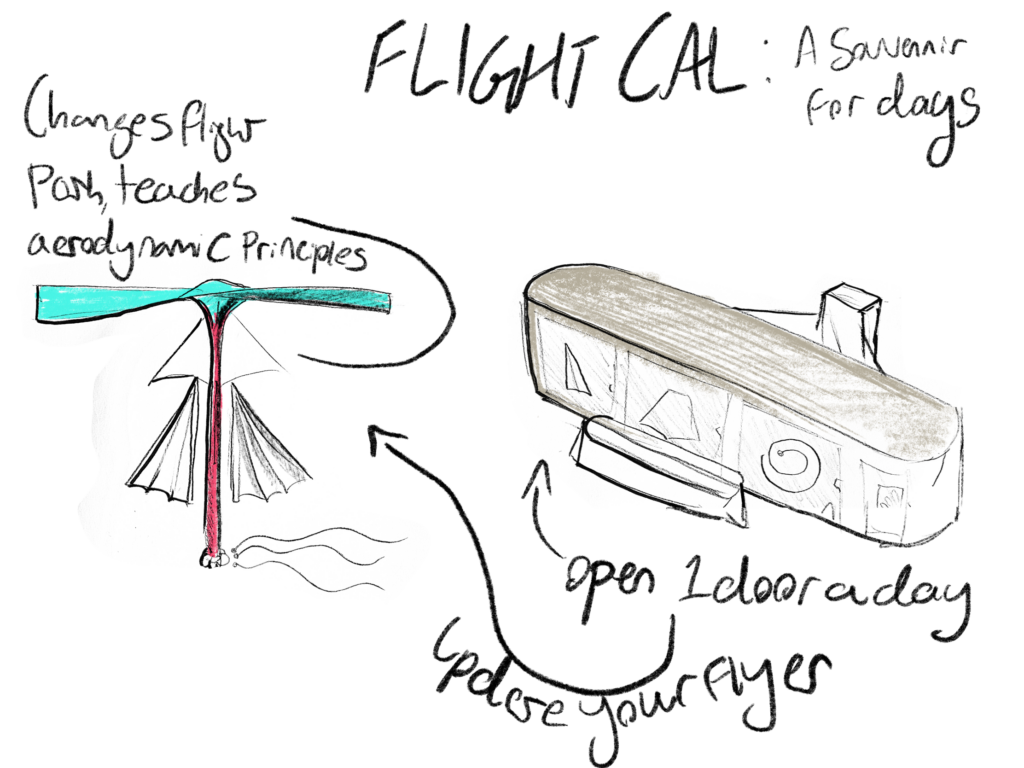
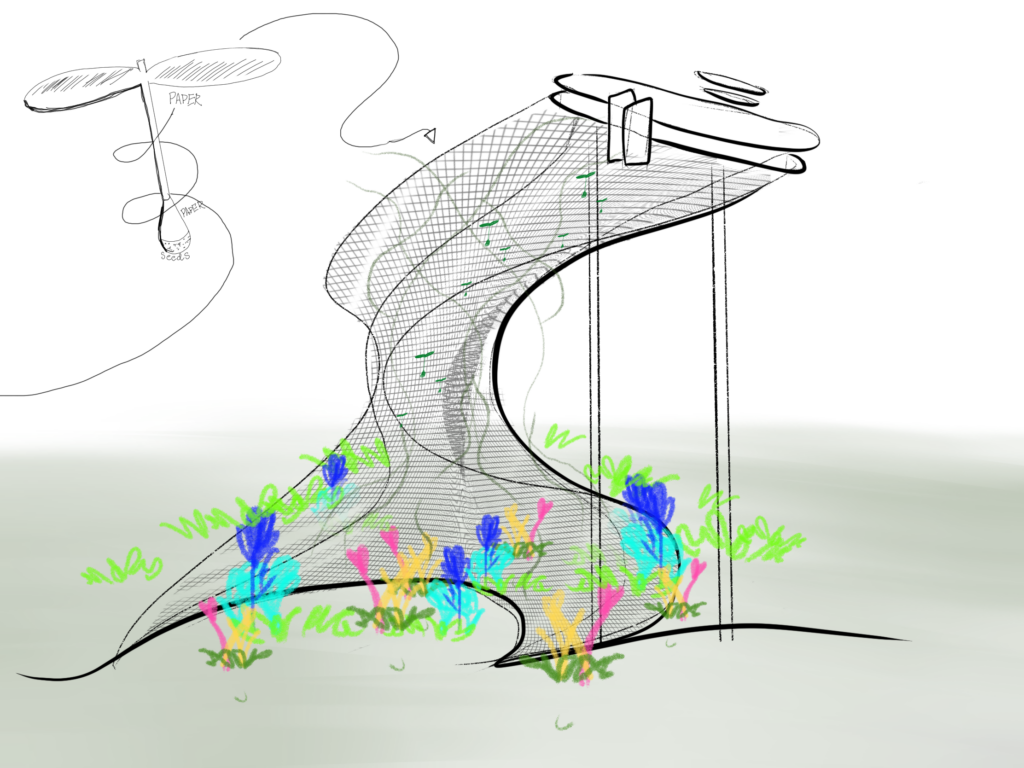
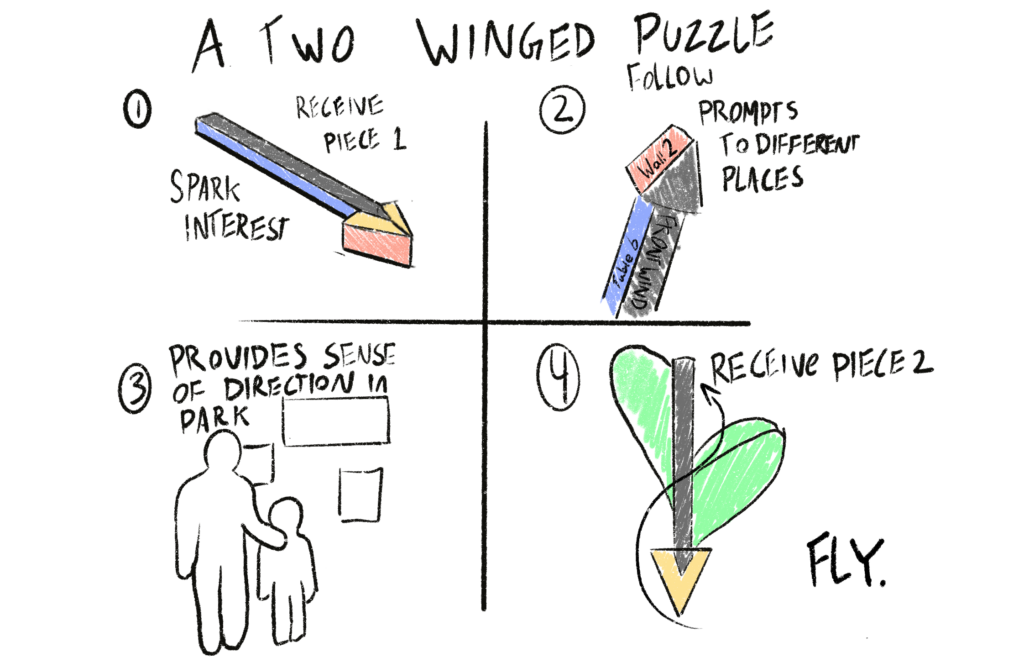
My next conjecture path began to bridge what the puddle jumper is and what visitors needed. This conjecture showed a version of the toy that also acted as a scavenger hunt for important historic checkpoints in the museum. It was convoluted, but pointed me in a new direction: how could that idea of historic checkpoints be done without the puddle jumper? Like Franklin Park Conservatory, or Orton Geological Museum, the historic part of the park needed some intuitive cue to allow visitors a place to enter the story without diving headfirst into the thick of the museum signage.
This is where I discovered an opportunity for design, the design brief, the problematic. Dayton Aviation Heritage National Historic Park needs a designed experience that leads visitors to the important moments in the story of aviation, and makes the moments feel real. This could be environmental, it could be an object, or a system, any number of design answers exist, and it’s time to begin finding them. How can design open opportunities for people to connect with a historic self tour in a way that is intuitive and engaging?
__________________________________________________________
References
Gugliemotto, S. (2023, April 21). About Us. Franklin Park Conservatory and Botanical Gardens. https://www.fpconservatory.org/about-us/
U.S. Department of the Interior. (n.d.-a). Stats report viewer. National Parks Service. https://irma.nps.gov/Stats/SSRSReports/Park%20Specific%20Reports/Monthly%20Public%20Use?Park=DAAV
U.S. Department of the Interior. (n.d.-b). What’s in a name? discover national park system designations (U.S. National Park Service). National Parks Service. https://www.nps.gov/articles/nps-designations.htm

